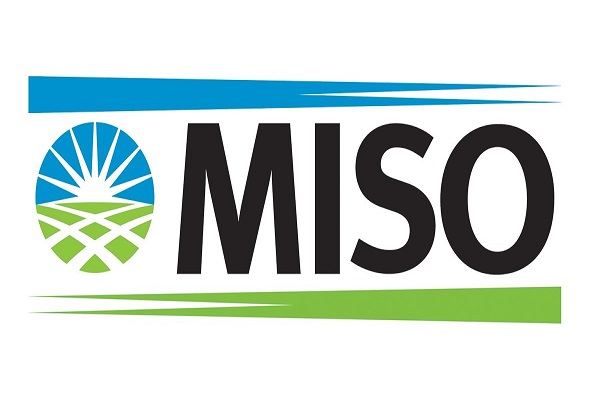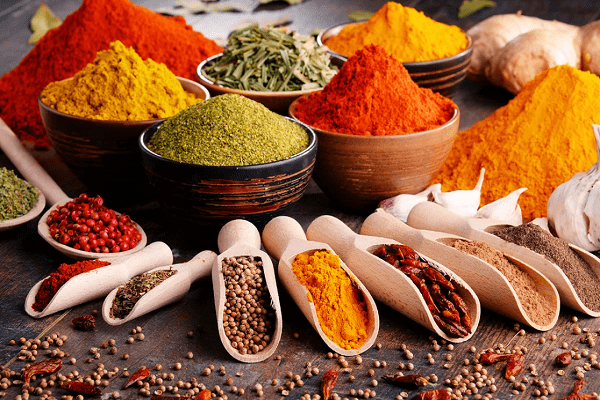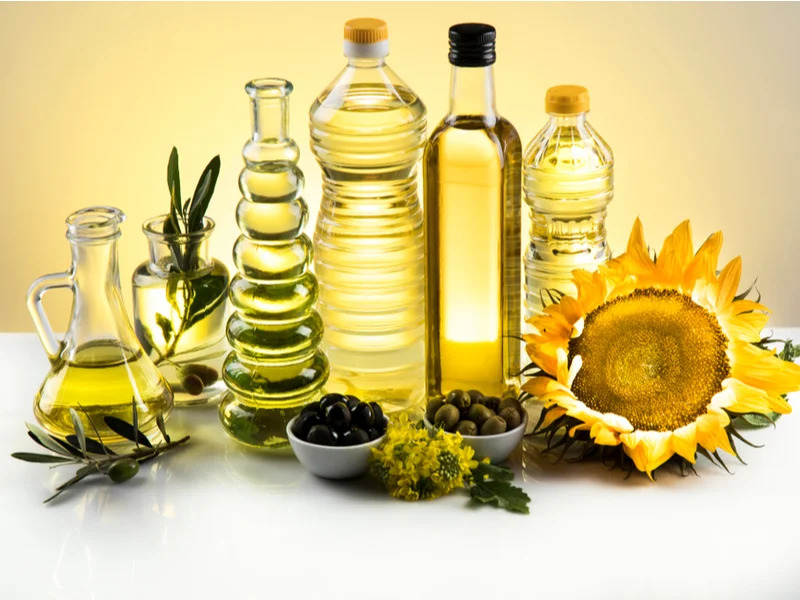Global Spices and Seasonings market size was USD 21.04 billion in 2023 and the market is projected to touch USD 39.35 billion by 2032, at a CAGR of 7.20% during the forecast period. Spices are natural plant ingredients, such as seeds, roots, or bark that contribute flavor, fragrance, and colour to foods, whereas seasonings are combinations of spices or herbs that produce specific tastes. This market offers a diverse assortment of items, including popular spices such as pepper, cinnamon, and turmeric, as well as seasoning mixes such as Italian seasoning or Cajun spice mix. Spices and seasonings are in high demand because they play an important part in cooking across many cuisines across the world, adding taste while also contributing to ethnic and regional culinary traditions. Furthermore, factors such as increased globalization, expanding consumer knowledge about varied cuisines, and growing desire in healthy and organic components influence market growth. With the expansion of the food industry and changing consumer preferences, the spices and seasonings market is experiencing significant growth, with opportunities for innovation and product diversification to meet evolving consumer demands. However, the market also faces challenges such as fluctuations in raw material prices, stringent regulations regarding food safety and quality, and competition from substitute products.
Global Spices and Seasonings dynamics
Key drivers include the rising popularity of varied cuisines throughout the world, which is fuelled by factors such as globalization, greater travel, and intercultural influences. This tendency drives demand for a diverse range of spices and flavors, reflecting the rich tapestry of worldwide culinary traditions. Furthermore, increased consumer knowledge of the health advantages of particular spices, such as turmeric or ginger, helps to drive market expansion as people seek for natural and functional components for their cuisine.
Furthermore, the food industry’s emphasis on product innovation and taste experimentation fuels demand for new and unusual spice mixes and seasonings, responding to growing customer preferences and culinary trends. Technological advancements in processing and packaging also play a significant role in market dynamics, enabling companies to improve efficiency, extend product shelf life, and enhance product quality. Furthermore, the increasing popularity of convenience foods and ready-to-eat meals fuels demand for pre-packaged spice mixes and seasoning blends, offering consumers convenient solutions for flavouring their meals quickly and easily.
Global Spices and Seasonings drivers
Cultural Diversity and Globalization
The growing ethnic variety and globalization of culinary preferences are major drivers of the spices & seasonings business. As people discover and enjoy different cuisines from across the world, there is an increasing need for a diverse range of spices and seasonings to recreate unique flavors at home. This trend is being driven by reasons such as foreign travel, migration, and the impact of social media, which expose people to new culinary experiences and sensations. As a consequence, customers seek out exotic spices like cardamom from South Asia, za’atar from the Middle East, or garam masala from India, boosting development in the worldwide spices and seasonings industry.
Click For Research report: https://organicmarketresearch.com/global-spices-and-seasonings-market
Health and Wellness Trends
Another key driver of market expansion is increased knowledge of the health and wellness advantages of specific spices and seasonings. Consumers are becoming increasingly aware of spices’ functional characteristics, such as anti-inflammatory, antioxidant, and digestive benefits. Turmeric, for example, is in high demand due to its anti-inflammatory characteristics, and people are incorporating it into their diets for health benefits. Similarly, spices like cinnamon and ginger are well-known for their ability to assist digestion and increase immunity. Consumers value health-conscious eating habits and are prepared to pay premium prices for high-quality, natural spices and seasonings, driving market growth and stimulating product innovation to satisfy changing consumer requirements.
- Restraints:
Supply Chain Disruptions
The spices and seasonings market faces challenges related to supply chain disruptions, including issues such as crop failures, adverse weather conditions, and transportation bottlenecks. The sourcing of spices often relies on specific geographic regions or seasonal harvests, making the supply chain vulnerable to disruptions caused by natural disasters or geopolitical tensions. Such disruptions can lead to fluctuations in raw material prices, supply shortages, and quality inconsistencies, posing challenges for market players in maintaining stable production and meeting consumer demand.
Regulatory Hurdles
The spices and seasonings market is subject to stringent rules and quality requirements enforced by numerous regulatory agencies in order to assure food safety and consumer protection. Compliance with these standards requires large investments in testing, certification, and quality control methods, especially for businesses that operate in various jurisdictions with varying regulatory requirements. Furthermore, worries regarding contamination, adulteration, and pesticide residues in spices pose reputational hazards to businesses and can undermine customer trust. Navigating the complicated regulatory framework adds complexity and expense to spice makers’ business operations, limiting market growth and innovation to some extent.
- Opportunities:
Rising Demand for Organic and Sustainable Products
The increased consumer demand for organic and sustainable food products creates considerable prospects for the spice and seasonings industry. As customers grow more aware of environmental and ethical concerns, they look for organic spices and seasonings that are free of synthetic pesticides, chemicals, and genetically modified organisms (GMOs). Companies that sell certified organic and sustainably sourced spices may benefit from this trend by catering to a rising group of health-sensitive and ecologically conscientious customers. Furthermore, programs that promote fair trade standards and ethical sourcing can improve the marketability of spices and seasonings, offering chances for differentiation and premiumization in the market.
- Segment Overview
By type, the spices and seasonings market includes a wide range of items that appeal to different taste profiles and cooking uses. Pepper, a popular spice worldwide, is valued for its pungent flavor and flexibility in flavouring savory meals. Chili lends heat and intensity to cuisines, whilst ginger has a spicy, lemony taste that is commonly utilized in both sweet and savory dishes. Cinnamon, with its warm, sweet scent, is commonly used in baked products and pastries, whilst cumin provides earthy, nutty undertones to foods. Turmeric is known for its brilliant colour and earthy flavor, as well as its health advantages, and is commonly used in curries and drinks. Nutmeg and mace add toasty, fragrant tastes to both sweet and savory meals. Cardamom lends a distinctive, floral-citrusy flavor to foods and beverages, while cloves offer a strong, aromatic taste commonly used in spice blends and desserts. Capsicum, derived from chili peppers, adds heat and flavor to foods, while coriander provides a citrusy, slightly sweet taste often used in curries, soups, and stews. Other spices and seasonings encompass a wide range of products, including exotic blends, specialty herbs, and regional favourites, contributing to the richness and diversity of the global spices and seasonings market.
Spices and seasonings play an important function in improving the flavor and aroma of a wide range of food products across culinary categories. Spices such as pepper, chile, ginger, and cloves are widely used to season and marinade meats and poultry, adding depth of flavor and complexity to the recipes. Spices like cinnamon, nutmeg, and cardamom provide warmth and sweetness to bakery and confectionery items, giving them a distinct scent and flavor profile. Frozen foods and snacks frequently use spices and seasonings to add zest and excitement to quick, on-the-go meals, while soups and sauces use a combination of spices like cumin, coriander, and turmeric to create rich, aromatic bases. Beverages also benefit from the addition of spices, with ingredients like ginger, cinnamon, and cardamom infusing teas, coffees, and cocktails with unique flavors and aromas.
Global Spices and Seasonings Overview by Region
Asia-Pacific emerges as a market leader, owing to the long tradition of spice cultivation and use in India, China, and Southeast Asian countries. These locations include a diverse range of indigenous spices and seasonings, including turmeric, ginger, chile, and coriander, which are essential to traditional cuisines and cultural customs. Increasing urbanization, rising disposable incomes, and changing dietary patterns all contribute to the region’s increased demand for convenience foods and packaged spice mixes. North America and Europe are also important markets for spices and seasonings, driven by the rising popularity of ethnic cuisines, gourmet cookery, and healthy eating trends. Consumers in these regions seek out premium and organic spices, driven by concerns about quality, authenticity, and sustainability. Moreover, the rising demand for innovative flavor profiles and fusion cuisines drives market growth, with companies capitalizing on consumer preferences for adventurous dining experiences. Latin America and the Middle East & Africa regions also contribute to the global spices and seasonings market, characterized by the use of bold and aromatic spices like chili, cumin, and paprika in regional cuisines. While these regions exhibit diverse culinary traditions and consumption habits, they face challenges related to infrastructure, supply chain logistics, and regulatory frameworks, which impact market growth to some extent.
Global Spices and Seasonings market competitive landscape
Key market participants include McCormick & Company, Inc., Olam International, and Associated British Foods plc, among others, who control the industry with vast product portfolios, powerful distribution networks, and high brand recognition. These organizations make significant investments in research and development to create and release new spice mixes, spices, and taste profiles that adapt to changing customer preferences and culinary trends. Furthermore, large firms frequently use strategic alliances, mergers, and acquisitions to increase market share, penetrate new geographic areas, and improve product offerings. Regional firms also play an important role in the industry, using their knowledge in obtaining native spices and catering to the distinct flavor preferences of regional cuisines. Moreover, the market is characterized by intense competition, with players vying for market share through competitive pricing strategies, product differentiation, and marketing initiatives. With the growing demand for natural, organic, and ethically sourced spices, companies are increasingly focusing on sustainability, traceability, and transparency in their supply chains to gain a competitive edge and build consumer trust.
Global Spices and Seasonings Recent Developments
- In April 2023, The Kraft Heinz Company unveiled its introduction of Just Spices to the U.S. market, marking a swift move just a year following the completion of its acquisition of a controlling interest in the brand.
- In April 2023, the McCormick brand announced an expansion of its collaboration with Tabitha Brown, revealing the debut of five new salt-free, vegan seasoning products in U.S. grocery stores. These innovative products, developed in partnership with Tabitha Brown, include: McCormick Like Sweet Like Smoky All Purpose Seasoning, McCormick Burger Bliss Seasoning Mix, McCormick Very Good Garlic All Purpose Seasoning, McCormick Sauté Sensation Seasoning Mix, and McCormick Taco Tantalizer Seasoning Mix.
Contact Us:
Mob : +91 9319642100
Noida One Tower Sec 62 Noida 201301
Sales : sales@organicmarketresearch.com
Website : https://www.organicmarketresearch.com















